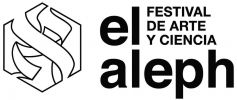Sala10: Forensic Architecture
virtual exhibition
Tear Gas in Plaza de la Dignidad
At the heart of the 2019 anti-government protests that swept Chile was the Plaza de la Dignidad, an occupied roundabout in central Santiago. The plaza became a locus for police violence, including the extensive use of chemical agents such as tear gas against peaceful protesters.
On 20 December 2019, hundreds of tear gas canisters were deployed against protesters in an egregious display of disregard for public health by Chilean authorities. Forensic Architecture and the Chilean medical-activist No+Lacrimógenas worked together to analyse the use of tear gas by police on that day, and the scale of the health risks posed by it.
Forensic Architecture

When Gas Stops Being Invisible
“It is easier for man to maintain morale in the face of bullets than in the presence of invisible gas.”
Amos Fries, chief of the U.S. Army’s Chemical Warfare Service, 1928[1]
A little over a century ago, in 1914, during the so-called Battle of the Frontiers, a new weapon appeared between the French and German lines: tear gas. Historians have not come to a consensus as to whether this invention is the fault of the Germans, who were particularly skillful at chemical experimentation—research that precipitated the Second Industrial Revolution[2]—or if this invention was the culmination of “French chemists’ efforts […] to develop a new method of riot control while maneuvering around international treaty restrictions imposed on ‘projectiles filled with poison gas’ by The Hague Conventions of 1899.”[3]

The original purpose of tear gas was to irritate, asphyxiate and blind soldiers in order to drive them out of their trenches and then finish them off with bullets. In any case, the barbarity and dehumanization of World War One found their greatest representation in the gas masks used by the troops and in highly toxic products such as chlorine, phosgene and mustard gas, which were intended to kill or disable enemy combatants. The public indignation over the suffering and long-term harm done by these chemical weapons led to their prohibition in the 1925 Geneva Protocol. Curiously, this protocol was respected throughout World War Two by all belligerent states, although it is well-known that “humanitarian feelings did not prevent the Italians from gassing colonial people,” nor did it prevent the return of chemical weapons during the Iran-Iraq War.[4]
It is a paradox that these weapons, prohibited in the theater of war, have become a routine measure for repression in streets and public squares after being commercialized by World War One veterans themselves in the midst of the polarized mass movements and ideological clashes of the interwar period.
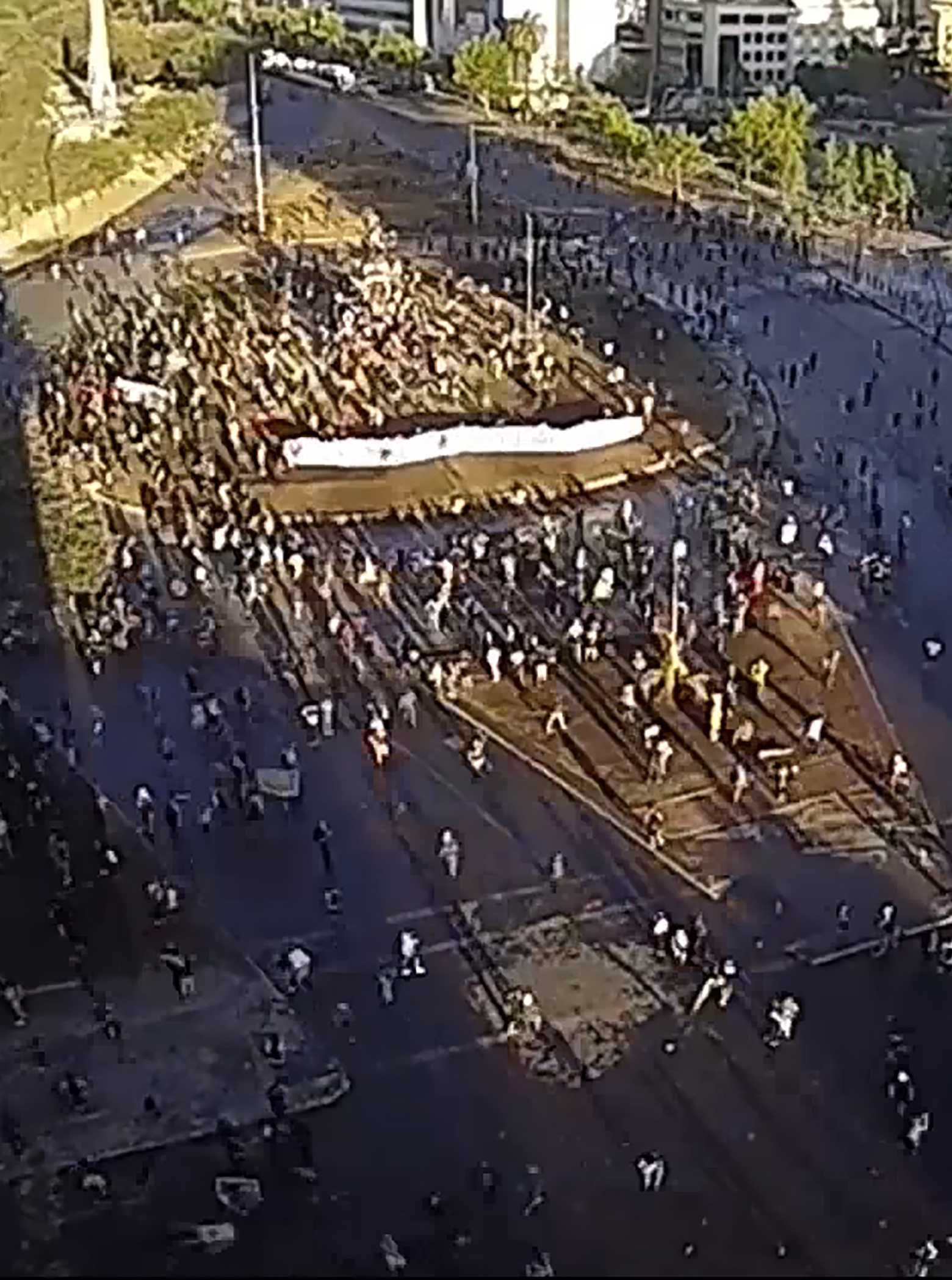
The frequency of images of clouds emerging among protestors has made it so that—as the historian Anna Feigenbaum argues—“people often forget that tear gas is a chemical weapon, designed for physical and psychological torture.”[5] In 2020, Amnesty International reported that tear gas has become “an awkward orphan of efforts to control chemical weapons and arms more generally.”[6] Its use for confronting civil unrest rose exponentially during the cycle of confrontations that followed May 68 in France, to the point at which it became a focal point for the struggles for human rights in the eighties and a priority issue in international recommendations on the use of force since 1990.[7] International agreements increasingly aim for strict regulations on the use of “less-lethal weapons” because, as the UN has argued, “the use of any weapon can have fatal consequences.”[8] Nevertheless, tear gas remains in a regulatory gray area: from its early commercialization around the world, practically without limitations and in formulations that make it difficult to monitor its composition, up through its at-will use by police forces, who tend to dismiss the risks involved in using it in a confined space or the many toxins it contains.[9] This is a venue of growing abuse by the state.
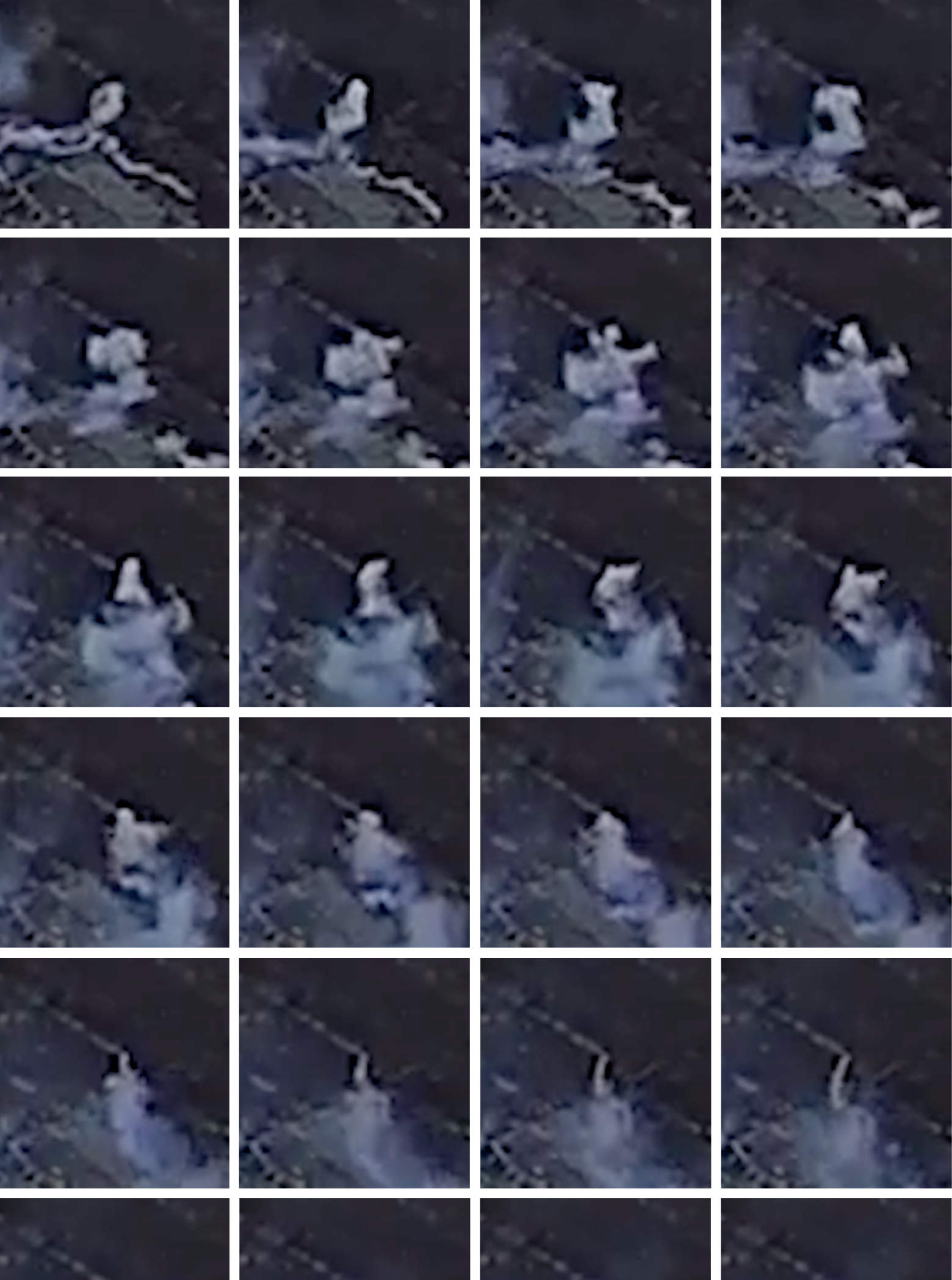
In spite of the COVID-19 pandemic, many parts of the world have seen protest movements that have largely emerged as a reaction to the violence perpetrated by the state and its police forces, as well as the way in which political battles are expressed through clashes in public space, provoked in part by the dysfunctionality of the apparatus of formal political representation.
In a particularly creative collaboration that shows great scientific and technical imagination, taking advantage of all types of publicly accessible visual records, Forensic Architecture was commissioned by the Chilean collective No+Lacrimógenas to investigate the degree of dangerousness of the tear gas concentrated in Plaza de la Dignidad in Santiago during the protests against the government of Sebastián Piñera starting in October 2019, which brought together social struggles and feminist movements in a growing rejection of the neoliberal policies and constitutional order that the country had inherited from the Pinochet dictatorship.
Forensic Architecture set out to illuminate state secrets regarding the violence exercised against the civilian population through the cognitive empowerment of society and public opinion, making use of the forensic methodologies that have characterized their past investigations, such as 3D modeling using architectonic visualization software, geolocation, video synchronization and visual testimony taken by civilians and the media, creating synchronized timelines by analyzing shadows over the course of the day.
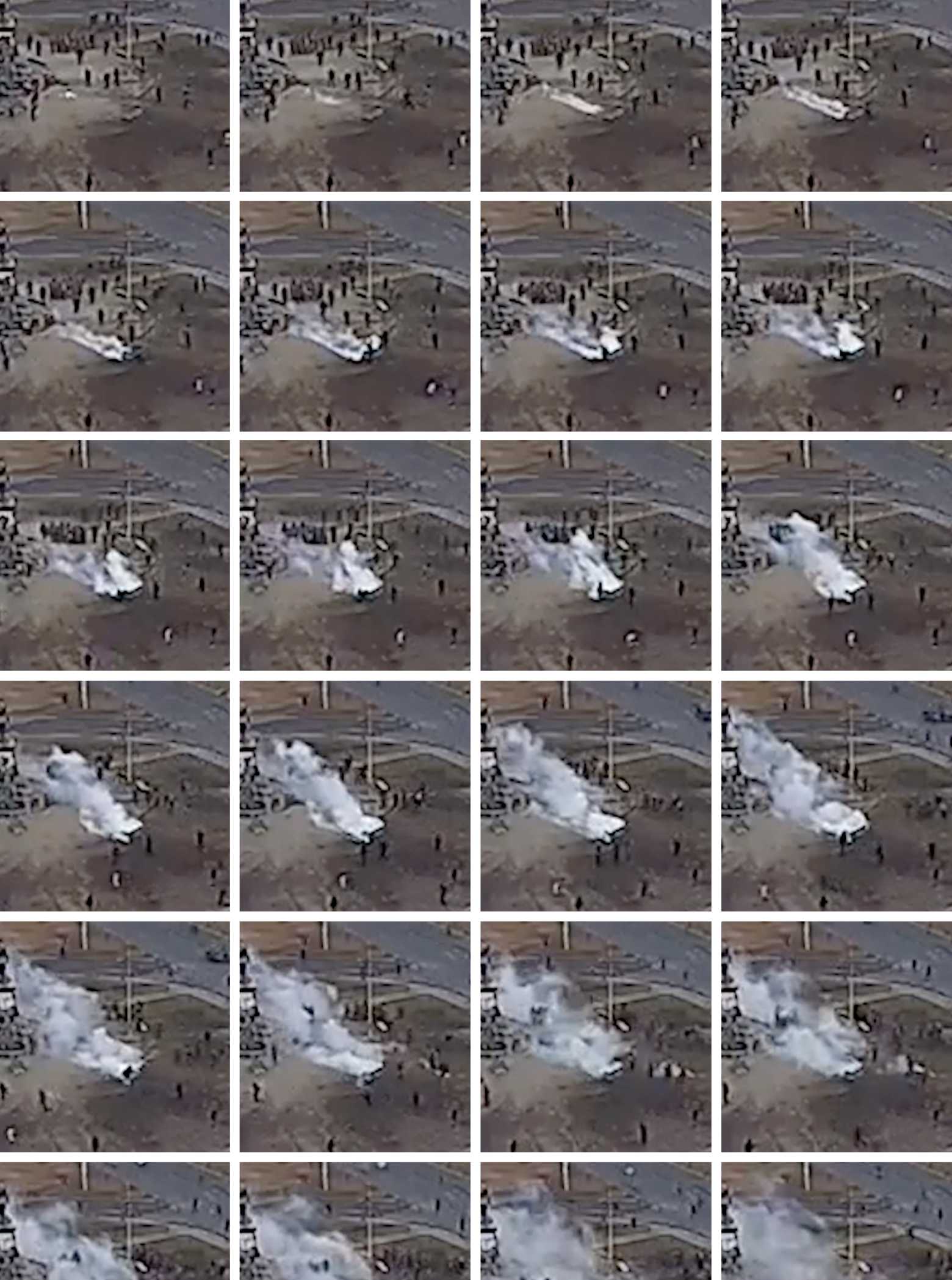
This time, the British research group, headquartered in Goldsmiths, University of London, has added a new element: a fluid dynamics analysis for tear gas, not just in its concentration in the midst of the protestors in the plaza, but also in its pollution of the urban environment at the time of its dispersion.
Through the imagination of a detective, an understanding of images, models and visual narratives as sources of data and rhetorical media that make an intellectual and emotional impact, Forensic Architecture has given us the opportunity to evaluate the full dimensions of the abuse of chemical weapons by police forces, from its health risks—and even lethality—for protestors attacked by the carabineros to its dangers for residents and the city itself.
The conclusions of this investigation are terrifying, as they transform the anecdotal images that we consume in the news and in documentaries into a scientific report on the criminal, systematic use of chemical weapons for purposes of political repression. In the course of a single night—December 20, 2019—the Chilean carabineros shot at least 594 tear gas cartridges at the protestors in Plaza de la Dignidad, which produced concentrations over 40 times the toxicity limit indicated by the manufacturer, resulting in nearly lethal concentrations. The simulation of fluids in the air reveals a dimension of these chemical weapons that has been left out of the public debate: the continuous abuse of this gas over the course of two years necessarily entailed a health risk for the residential population and the pollution of the Mapocho River, the city’s most important body of water.
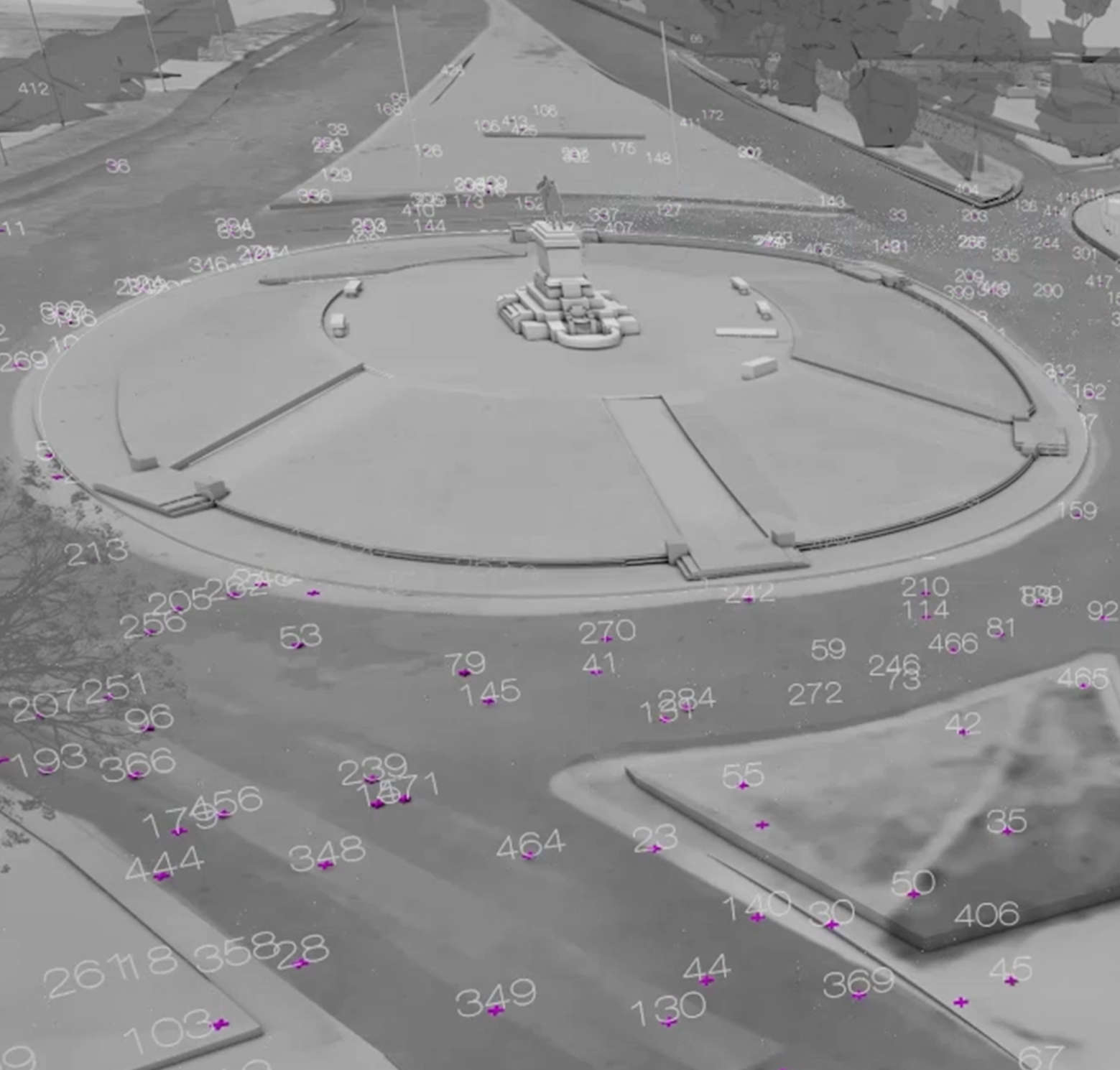
Tear Gas in Plaza de la Dignidad is an eloquent document that reveals the brutality with which the state, both in Chile and elsewhere, has reinstituted corporal punishment for dissent and critique.
The relevance of Forensic Architecture’s investigation transcends the local: it illustrates the urgency of controlling public force tactics, especially in a time in which the decadence of the nation-state as a supposed universal mediator of conflicts and the reemergence of direct action tactics in protests augur an increasingly-intense period of confrontation. This piece is an act of effective democratization, as it recovers the power of knowledge as a common good and poses the need to restore the prestige of the intelligence and the imagination as part of the spirit and tactics of protest. Let’s invert a well-known phrase to suggest that Forensic Architecture transforms testimonies of barbarism into tools for civilizational empowerment.
Cuauhtémoc Medina
[Footnotes]
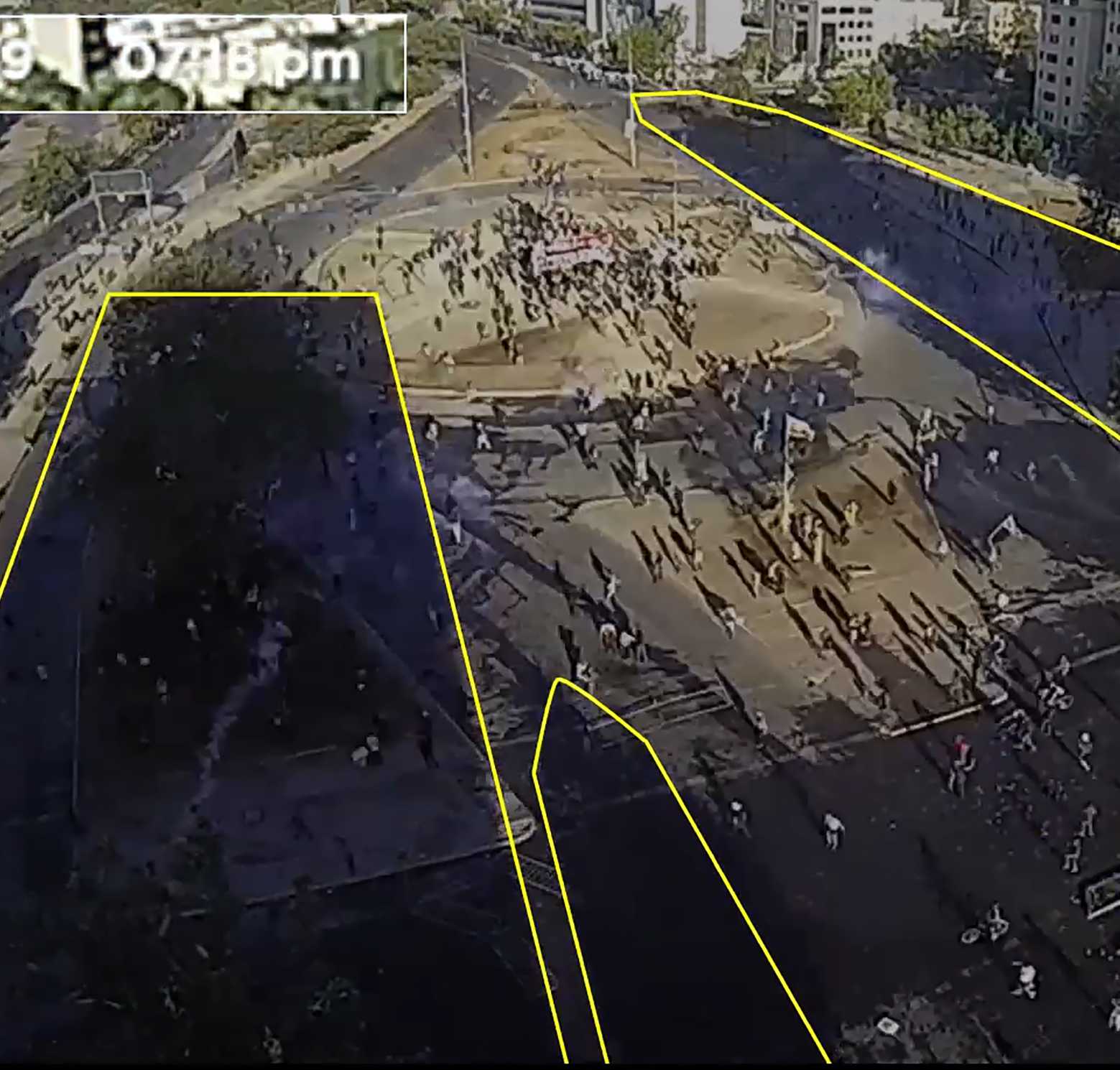
Script for Tear Gas in Plaza de la Dignidad
By Forensic Architecture
Since October 2019, the roundabout of Plaza de la Dignidad, in Santiago de Chile had been the focal point of nationwide protests.
Students, labor unions, queer and feminist advocacy groups and indigenous peoples gathered here to protest against neoliberal policies that had sustained decades of violent economic and social inequality. [...]
COMPLETE TEXT HERE
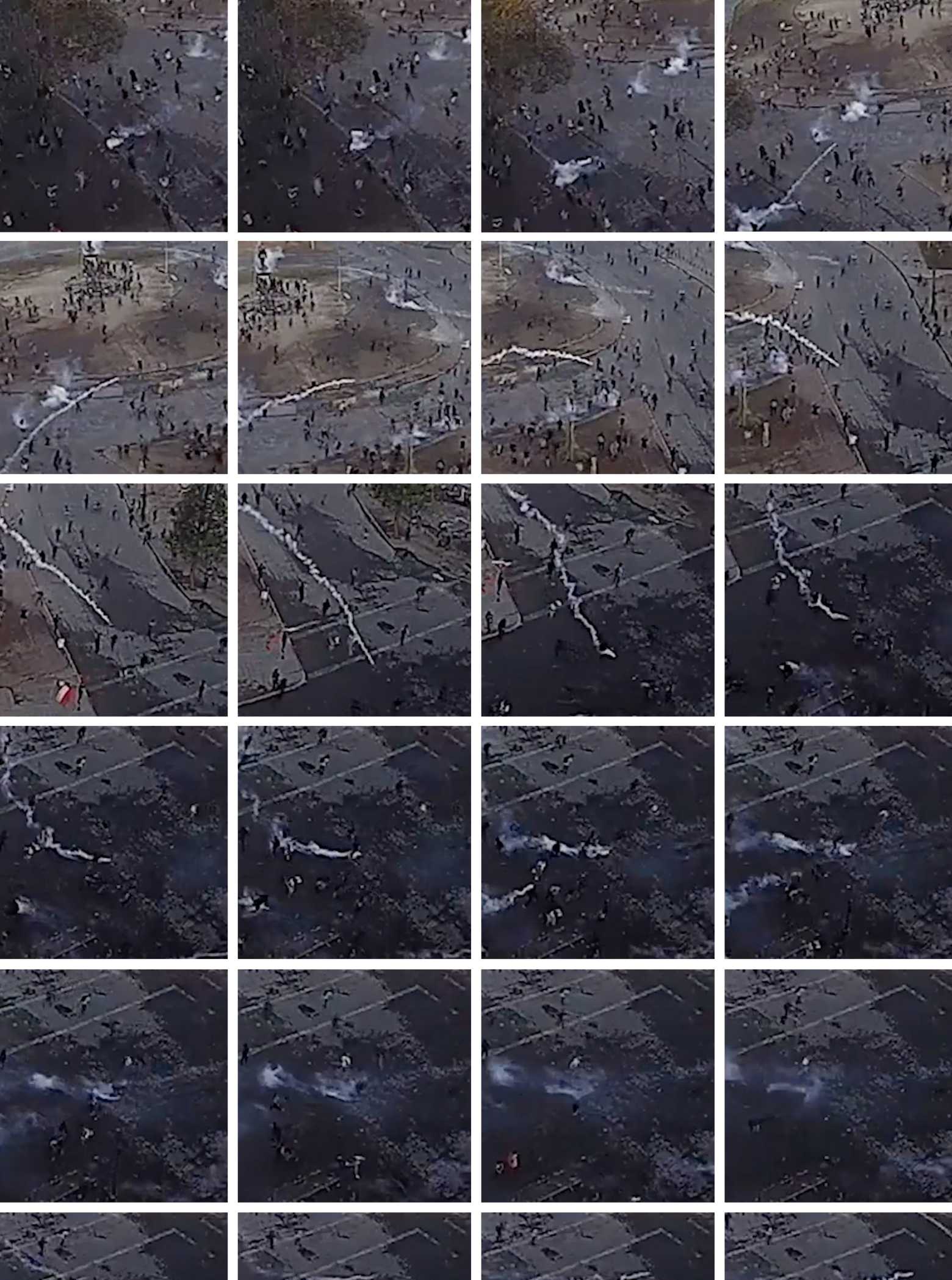
Forensic Architecture
FA is a research agency, established in 2010 and based at Goldsmiths, University of London, investigating human rights violations including violence committed by states, police forces, militaries, and corporations. FA works in partnership with institutions across civil society, from grassroots activists, to legal teams, to international NGOs and media organisations, to carry out investigations with and on behalf of communities and individuals affected by conflict, police brutality, border regimes and environmental violence.
FA’s investigations employ pioneering techniques in spatial and architectural analysis, open source investigation, digital modelling, and immersive technologies, as well as documentary research, situated interviews, and academic collaboration. Findings from FA’s investigations have been presented in national and international courtrooms, parliamentary inquiries, and exhibitions at some of the world’s leading cultural institutions and in international media, as well as in citizen’s tribunals and community assemblies.
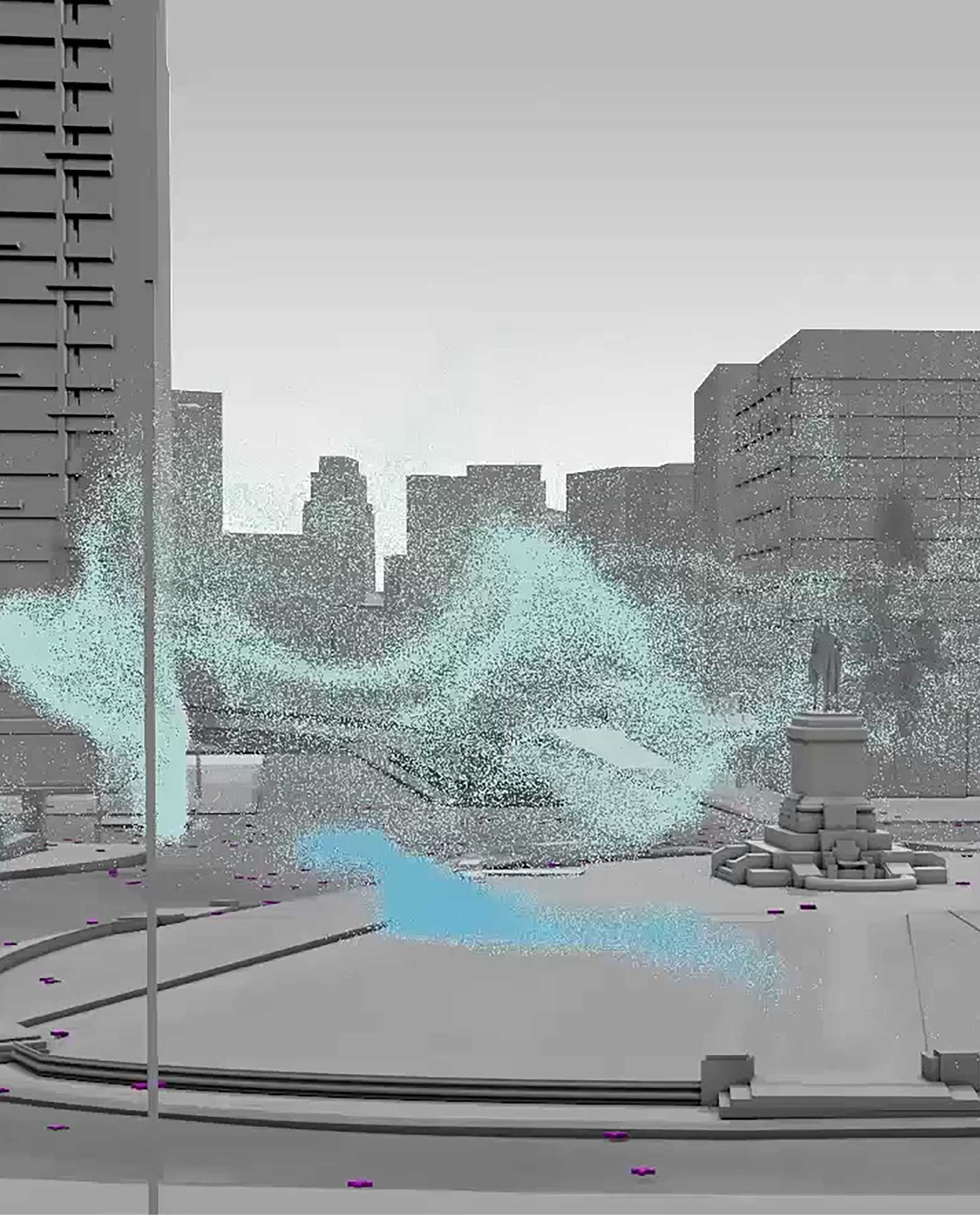
Forensic Architecture, Tear Gas in Plaza de la Dignidad, 2020
Video
9’ 35”
Commissioned by NO+LACRIMÓGENAS
Forensic Architecture team
Researcher-in-charge: Samaneh Moafi
Research: Martyna Marciniak, Giovanna Reder
Research supervision: Eyal Weizman
Research support: Robert Trafford
Sound design: Mark Nieto
Project support: Sarah Nankivell, Yasamin Ghalehnoie, Tamara Z Jamil
Extended team
Fluid dynamics simulation: Dr. Salvador Navarro-Martinez (Imperial College London)
CS consultant: Dr. Anna Feigenbaum
Collaborators: Dr. Ángeles Donoso Macaya, Dr. César Barros A., Galería Cima, Marucela Ramírez, Camila Pérez Soto, Ignacio Farias, Francisca Benítez, Alexander Samuel, Neil Corney
https://forensic-architecture.org
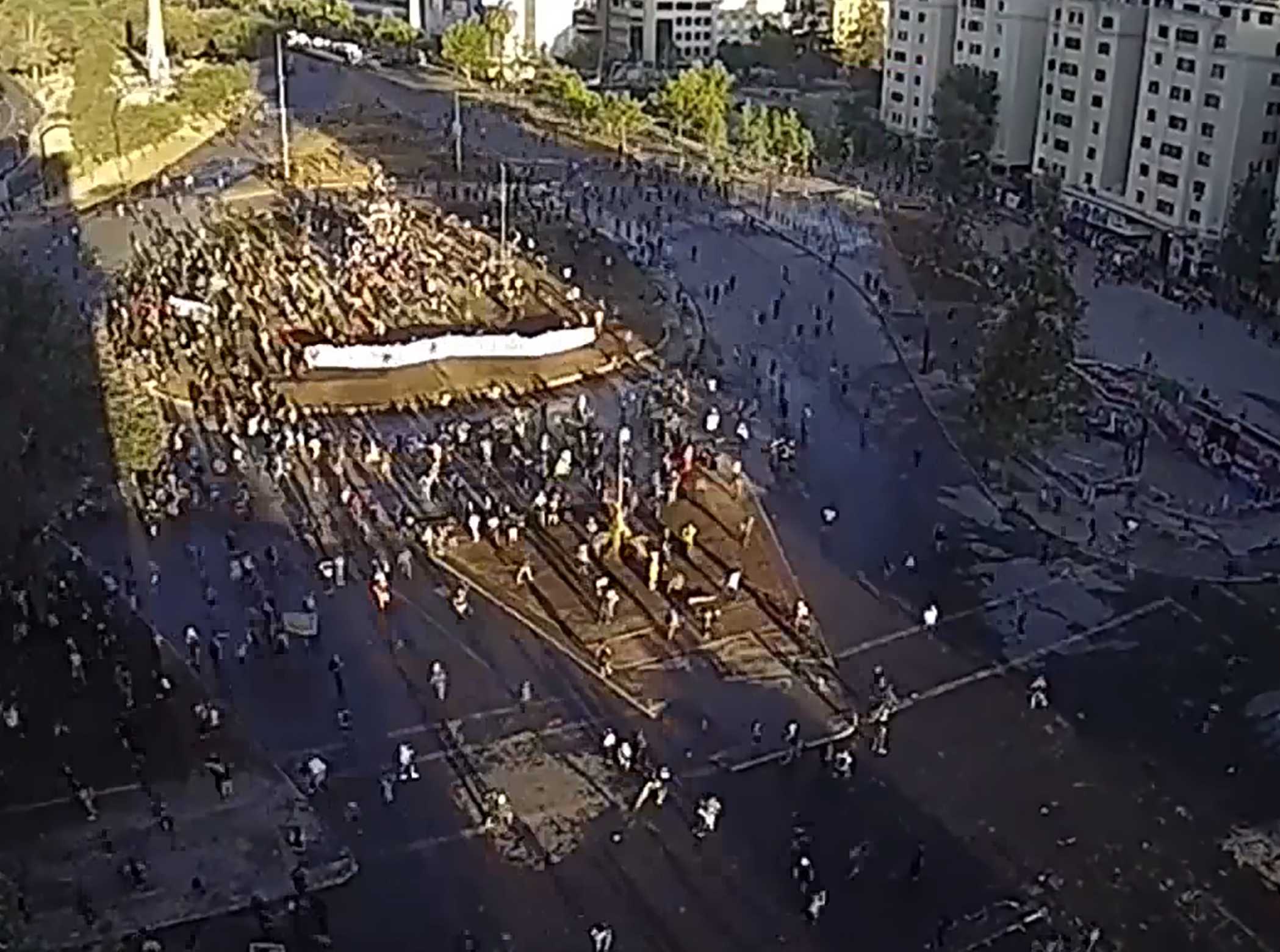
Curatorship: Cuauhtémoc Medina
Texts: Forensic Architecture, Cuauhtémoc Medina
Content direction: Ekaterina Álvarez, Cuauhtémoc Medina
Curatorial coordination: Ana Sampietro
Digital management: Ana Cristina Sol
Content editing: Vanessa López, Javier Villaseñor
English translation: Julianna Neuhouser
Press: Francisco Domínguez, Eduardo Lomas
